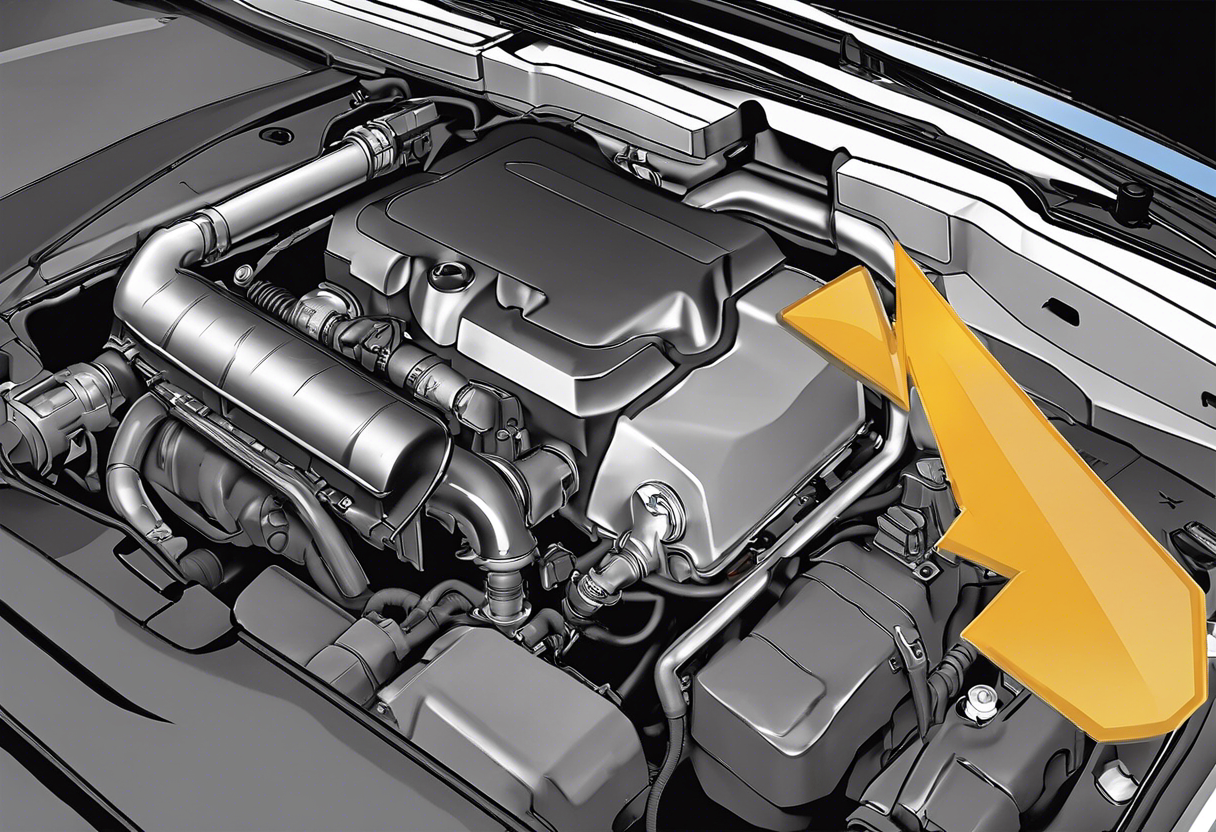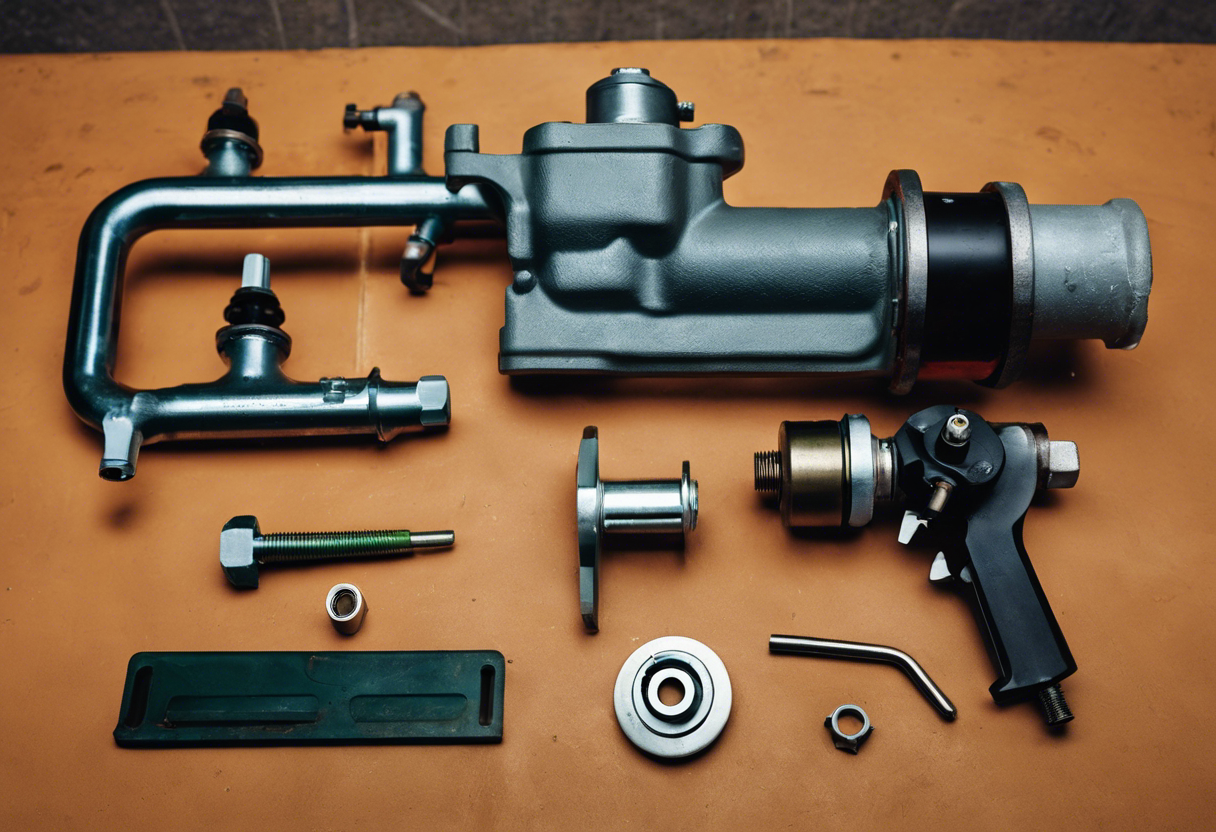The clutch master cylinder is a pivotal component in a vehicle’s manual transmission system. It transforms the mechanical pressure applied by the driver’s foot on the clutch pedal into hydraulic pressure. This pressure initiates the disengagement process of the clutch from the engine, allowing for smooth gear shifts. It works in tandem with the slave cylinder to facilitate this process. Should the master cylinder begin to fail, it can compromise the entire transmission’s functionality, making it crucial to identify issues early on. Understanding its operation is key to diagnosing common problems that may arise during its lifespan.
Understanding the Role of the Clutch Master Cylinder in Vehicle Operation
The clutch master cylinder is crucial in a vehicle’s clutch system. It converts the driver’s pedal force into hydraulic pressure. This pressure actuates the clutch slave cylinder, facilitating gear shifts by disengaging the clutch when the pedal is pressed. Typically, this component comprises a reservoir that holds the brake fluid and a piston assembly. It is connected to the clutch pedal via a rod. Proper functioning of the master cylinder is vital for the clutch’s responsiveness and, subsequently, for the smooth operation of the vehicle’s transmission system. Without it, power transfer from the engine to the drivetrain would be compromised, leading to significant drive ability issues.
Early Warning Sign #1:
Spongy or Soft Clutch Pedal
When the clutch master cylinder begins to fail, a common early indication is a spongy or soft feeling clutch pedal. This symptom arises when air enters the hydraulic system, which should only contain fluid. The presence of air can lead to reduced hydraulic pressure, making the pedal feel softer to the touch when depressed. This spongy sensation will often make it more challenging to engage the clutch smoothly, as the predictable resistance of the pedal is diminished. If this softness is noticed, it is crucial to investigate further, as it can lead to a complete clutch system failure if not addressed promptly.
Early Warning Sign #2:
Difficulty Shifting Gears
When the master cylinder begins to fail, drivers might find it increasingly challenging to shift gears. This symptom arises due to the cylinder’s inability to properly disengage the clutch when the pedal is pressed. Consequently, the gears may:
- Resist movement when attempting a shift.
- Grind or make audible noises, signifying distress.
- Require more force to move than usual.
- Fail to engage completely, possibly causing the vehicle to stall.
These gear-shifting issues can often be intermittent before developing into a constant problem. Addressing the difficulty in shifting gears promptly can prevent further damage to the transmission system.
Symptom #3:
Fluid Leaks Near the Clutch Pedal
When the master cylinder begins to fail, one of the most evident symptoms that vehicle owners might notice is a fluid leak in the footwell near the clutch pedal. This can be caused by:
- A worn or damaged seal within the master cylinder.
- Cracked or brittle cylinder housing.
- Loose or damaged connections between the cylinder and the hydraulic line.
The presence of fluid in this area typically indicates brake fluid, which is used within the clutch hydraulic system. It’s essential to address this issue promptly, as fluid leaks can lead to reduced hydraulic pressure, impairing the clutch’s ability to disengage properly.
Telltale Symptom #4:
Unusual Noises During Clutch Engagement
When the master cylinder is failing, one may begin to notice odd sounds as they engage the clutch pedal. These sounds can include:
- Squeaking or chirping when the pedal is pressed or released.
- Grinding noise suggesting that the clutch is not fully disengaging.
- Whining or groaning which indicates that internal components may be worn or lacking proper lubrication.
Such acoustic signals should not be ignored, as they are often indicative of an imminent master cylinder failure or other clutch-related issues. It’s imperative to have these symptoms inspected by a qualified technician to avoid further damage to the vehicle’s drivetrain.
Indication #5:
Inconsistent Clutch Engagement
When a master cylinder is on the brink of failure, drivers may notice erratic behavior in clutch engagement. This symptom manifests as:
- The clutch pedal feeling spongy or loose at times, while at other moments it may be unusually stiff.
- Difficulty in shifting gears, as the clutch does not disengage consistently.
- An unpredictable biting point that seems to vary each time the clutch is engaged.
- Engaging the clutch may result in jerky or unsmooth vehicle movements, highlighting irregularities in hydraulic pressure.
Such inconsistency can not only be frustrating, but also poses a safety risk, emphasizing the urgency for inspection and potentially replacing the master cylinder.
How a Faulty Clutch Master Cylinder Affects Driving Safety
When the cylinder fails, it jeopardizes driving safety in several ways:
- Inconsistent Clutch Engagement: Erratic clutch behavior can lead to a lack of control over vehicle speed and gear transitions, increasing the risk of accidents.
- Delayed Response: A failing cylinder may cause a delayed response in clutch disengagement, making it difficult to stop or start the vehicle promptly, which is particularly hazardous in emergency situations.
- Loss of Gear Control: The inability to smoothly change gears can result in the driver being stuck in an inappropriate gear for the driving conditions, compromising maneuverability and reaction time.
- Increased Stopping Distance: A defective clutch system may prevent the driver from downshifting appropriately, leading to longer stopping distances and potential collisions.
- Driver Distraction: Struggling with gear shifts and clutch control can divert the driver’s attention from the road, increasing the likelihood of driver error and subsequent accidents.
Each of these issues can directly impact the driver’s ability to operate a vehicle safely and react to road conditions and traffic, potentially leading to dangerous driving scenarios.
Diagnosing Clutch Master Cylinder Issues:
A Step-by-Step Guide
- Check the clutch fluid level in the reservoir. Low fluid may indicate a leak in the master cylinder.
- Inspect for leaks around the cylinder. Presence of fluid on the cylinder body often points to a failed seal.
- Test the clutch pedal. Spongy or inconsistent pedal feel can signal a compromised master cylinder.
- Observe the clutch engagement. Difficulty in shifting gears or a clutch that won’t disengage could stem from master cylinder issues.
- Consult a professional mechanic. They can perform a thorough diagnosis, including a pressure test, to confirm the master cylinder’s condition.
The Lifespan of a Clutch Master Cylinder:
When to Expect Failure
The clutch master cylinder, an integral component of a vehicle’s clutch system, typically endures for approximately 50,000 to 100,000 miles. However, its lifespan can vary based on driving habits, the quality of the cylinder, and maintenance routines. Frequent driving in heavy traffic or harsh conditions can accelerate wear, necessitating an earlier replacement. Regular inspection and fluid changes enhance longevity, while ignoring early signs of wear can shorten the functional life of the master cylinder drastically. Vehicle owners should stay attentive to the performance of their clutch system and adhere to scheduled maintenance to preempt untimely failures.
Professional Advice:
Maintenance Tips to Prolong Clutch Cylinder Life
- Regularly check and maintain the correct fluid level in the clutch reservoir.
- Use high-quality brake fluid that meets your vehicle’s specifications.
- Inspect the clutch pedal for proper engagement and disengagement.
- Ensure there are no leaks in the clutch hydraulic system.
- Have your vehicle’s clutch system inspected by a professional at each service interval.
- Avoid riding the clutch pedal, as this can cause excessive wear.
- Listen for unusual noises when pressing the clutch pedal and address them promptly.
- If there are any signs of malfunction, have the clutch cylinder inspected immediately to avoid further damage.
Replacing a Clutch Master Cylinder:
A Cost-Benefit Analysis
When evaluating the costs and benefits of replacing a master cylinder, vehicle owners must consider several factors:
- Repair vs Replacement Cost: The cost of replacing a master cylinder typically ranges from $200 to $500. Delaying replacement could lead to more severe transmission issues, significantly increasing repair costs.
- Vehicle Downtime: A failing cylinder could cause a breakdown at inopportune moments. Timely replacement minimizes vehicle downtime and potential inconvenience.
- Resale Value: A functional clutch system improves vehicle resale value. Neglected maintenance may lower a vehicle’s marketability.
- Safety: A functional clutch is crucial for safe vehicle operation. Ensuring the master cylinder is in good condition prevents accidents due to gear slippage or failure.
- Warranty: Some replacements come with a warranty, offering long-term cost savings if issues arise post-repair.
In the long run, replacing a failing cylinder is often a financially sound decision that ensures safety, reliability, and vehicle longevity.
Conclusion:
The clutch master cylinder stands as a critical component in the seamless operation of a vehicle’s manual transmission system. Without it, the act of gear shifting becomes erratic or impossible. Recognizing the signs of malfunction, such as pedal sponginess, fluid leaks, or gear shifting difficulties, is crucial. Vehicle owners must remain vigilant to these symptoms, understanding that prompt attention to a failing master cylinder can prevent further transmission damage, maintain driving safety, and preserve the integrity of the overall driving experience. Regular maintenance and timely repairs are essential for the longevity and reliability of the clutch system.
FAQs
for more info: https://manualwheel.com/autolite-spark-p…t-a-buyers-guide/
for more info: https://www.quora.com/What-is-a-cylinder-in-a-car

